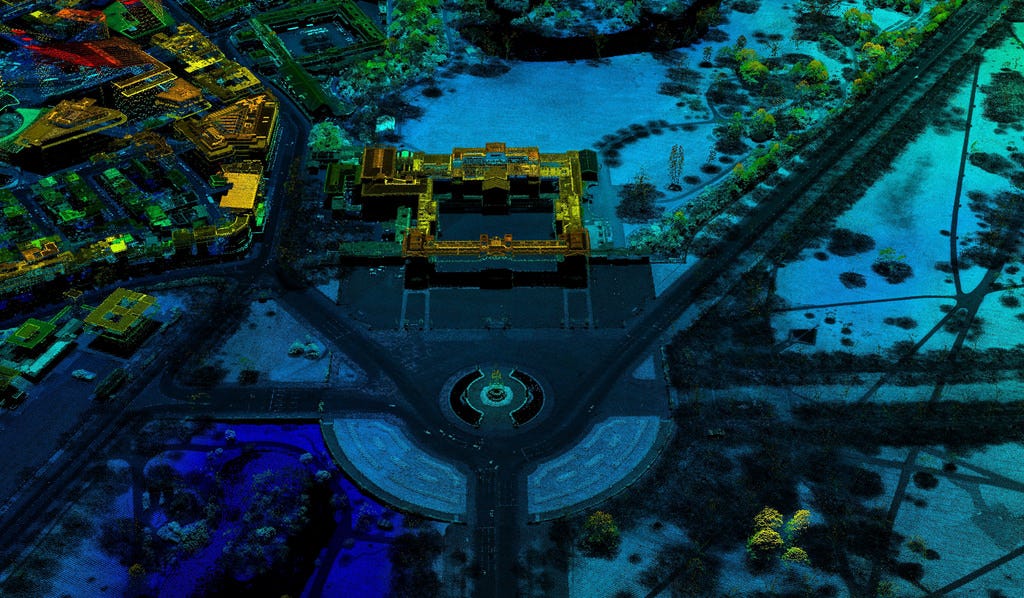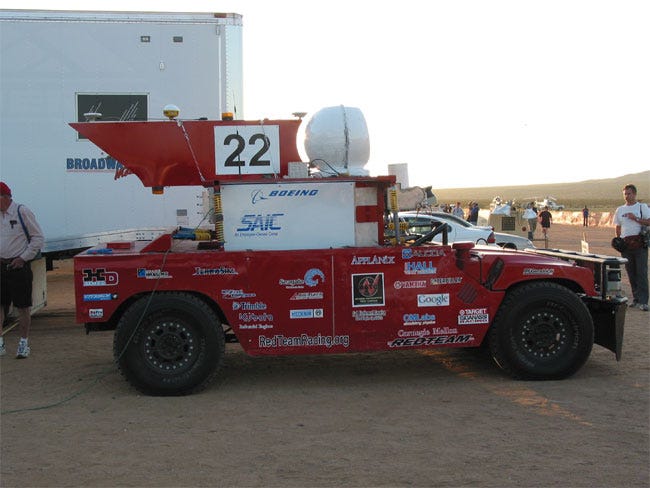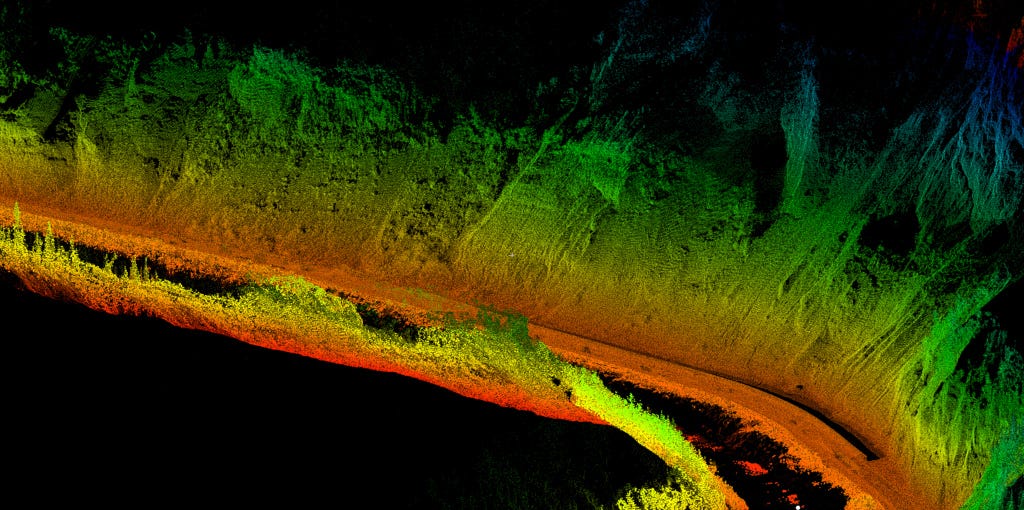Latest news about Bitcoin and all cryptocurrencies. Your daily crypto news habit.
LIDAR: Laser-Shooting Sensors for Self-Driving Cars
 An image of London’s Buckingham Palace with Lidar.
An image of London’s Buckingham Palace with Lidar.
Lidar technology is mainstream again, because of its use in self-driving cars. Lidar has been tremendously useful for decades now, in discovering mining sites, predicting earthquakes, mapping disaster areas before search and rescue operations, and measuring cloud density at airports. This article will dive into where Lidar came from, how it works, and how it is used in autonomous vehicles today.
Mapping the Moon — and Mayan Ruins
Lidar (short for ‘Light Detection and Ranging’ technology) is a technology used to detect, range, and map its surroundings. It is similar to radar and sonar, but uses light beams. Light has been used as a measurement tool since at least the 1930s, when light beams were used to measure cloud distances. Lidar was created in the 1960s and entered the public imagination when it was used by the Apollo 15 crew to map the moon’s surface.
 NASA’s LRO Camera Team Releases High Resolution Global Topographic Map of Moon.
NASA’s LRO Camera Team Releases High Resolution Global Topographic Map of Moon.
A Lidar machine consists of a laser pointing downwards from an aircraft and shooting up to 400,000 pulses or beams per second. The machine then uses active sensors to measure the energy of the reflection it receives. The resulting map of the surface below can be accurate to a within a couple of inches, and is called a ‘point cloud’. Lidar works naturally with GPS, since mapping requires both measurement and positioning. Lidar planes map small segments of land by flying in a pattern over the target area in grids.
Lidar is useful for creating topographical maps. Archaeologists have used it to discover Mayan buildings covered by vegetation in the Central American rainforest. It has also been used to determine ocean depths in shallow areas near land (using two lasers: one for the water’s surface and one for its floor).
Giving Sight to Self-Driving Cars
 Uber self-driving car with lidar system on roof
Uber self-driving car with lidar system on roof
Luxury car manufacturers have long used Lidar for Cruise Control mode (which allows a car to maintain a certain speed while the driver still pays attention to the road), by mounting a sensor to the front bumper to measure changes in speed and to look out for erratic movements in the cars ahead.
In 2005, German company Sick AG won a DARPA Grand Challenge by mounting five Lidar units on its vehicle. The Grand Challenge included self-driving cars and teams from around the world. The cars were put through a series of tests, like driving in traffic, merging, parking, passing others, negotiating traffic, and performing more complex maneuvers.
 The Red Team’s Car in DARPA’s Grand Challenge.
The Red Team’s Car in DARPA’s Grand Challenge.
Another participant in the Grand Challenge was Dave Hall. Hall had grown bored of running an acoustics company that specialized in subwoofer technology. So, he turned his attention to self-driving cars. In 2007, Hall created a 3D Lidar of his own by packing 64 emitters into a flattened round device on top of his car. The emitters and the on-board computers gave him a precise picture of his surroundings. Hall adapted his prototype for commercial use, and his company released the Velodyne PUCK Lidar sensor (which has since gone through a number of upgrades).
Despite Lidar’s use in obstacle detection and avoidance systems in self-driving cars, it cannot function on its own. (For example, Lidar cannot read traffic signs or comprehend traffic lights.) It is instead used in concert with other sensing systems, including radars and visual cameras. The sensing systems then work with onboard computation to navigate the car.
Thanks to advances in computing power, data storage, and machine learning, Lidar-enabled systems can now differentiate between bicycles and motorcycles, and between children and grown-ups. This allows self-driving cars to understand the flow of traffic and people at a more granular level.
 Lidar image of Glitter Gulch near Denali National Park in Alaska, with some nearby highway slopes.
Lidar image of Glitter Gulch near Denali National Park in Alaska, with some nearby highway slopes.
The Rise of Solid-State Lidar
So far, a Lidar system (a laser and a sensor) has had to rotate to scan a surrounding area, making the system either large or expensive.
The recent advent of solid-state Lidar, in which the entire system rests on a silicon chip and does not rotate, has allowed for the twin benefits of more compact systems and more accurate readings. Solid-state Lidar systems are also more durable, which is key for self-driving car manufacturers. So, car manufacturers are paying more attention to emerging solid-state Lidar companies, such as Quanergy and LeddarTech. This year, BMW announced that it will use solid-state Lidar in its self-driving car efforts.
If Lidar technology continues to improve rapidly, companies will be able to offer stationary, compact, and durable Lidar systems for very low prices. Lidar will then become indispensable — not just to self-driving cars, but also to drones and robots.
What is Lidar? was originally published in Hacker Noon on Medium, where people are continuing the conversation by highlighting and responding to this story.
Disclaimer
The views and opinions expressed in this article are solely those of the authors and do not reflect the views of Bitcoin Insider. Every investment and trading move involves risk - this is especially true for cryptocurrencies given their volatility. We strongly advise our readers to conduct their own research when making a decision.


